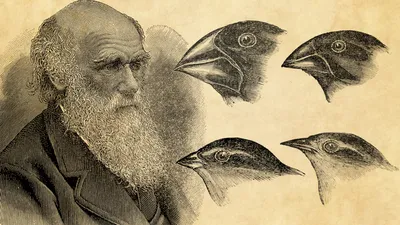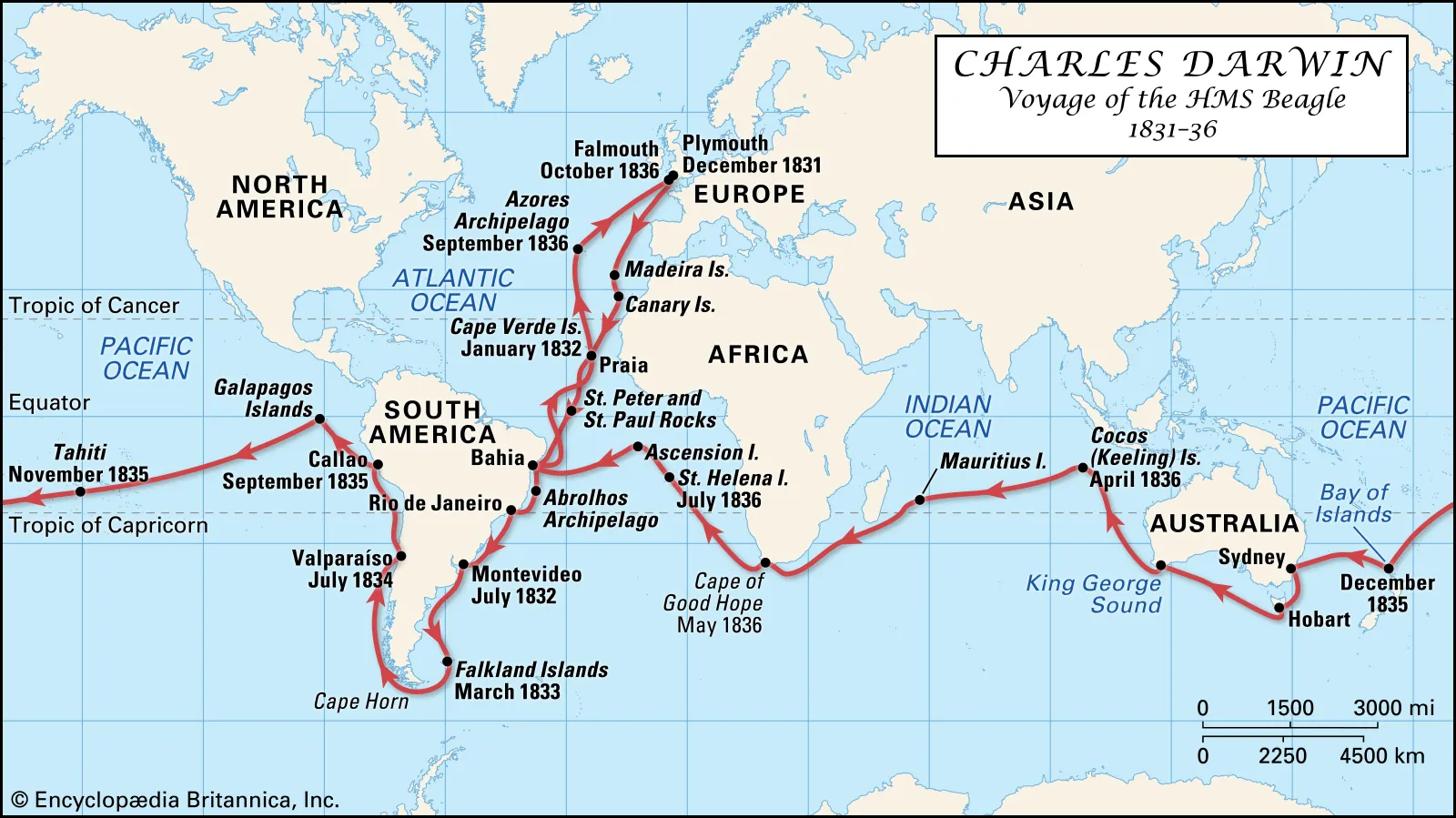Introduction
Have you always been curious about the biological origins of humans and other species alike? Today sceince can tell us many things about our ancestory, but just over 200 years ago most people exclusively believed that all living beings on Earth were created by a divine power. Our knowledge of evolution was built from the foundations of a revolutionary biologist known as Charles Darwin. In this wesbite, you will be taken through the most significant moments in Darwin's life, all of them accumulating to create his defining legacy: The Theory of Evolution by Natural Selection.

Who was Charles Darwin?
Charles Robert Darwin was a British Naturalist and Biologist, whose scientific theory of evolution through natural selection, rebuilt our understanding of evolution and the history of our species. He was born in Shrewsbury, Shropshire (February 2nd, 1809) and died in Downe, Kent (April 19th 1882). Darwin was born into an affluent family with two free-thinking grandfathers to influence him in early life; Josiah Wedgewood was a pottery Industrialist and anti-slavery campaigner, while Erasmus Darwin was a physician and poet who published the highly controversial book Zoonomia; or the Laws of Organic Life.
Darwin attended an Angelican school at a time where it was considered indecorous to study science. After taking it upon himself to understand the laws of chemistry, he was condemned by his headmaster and classmates. In 1825 his father sent him to the University of Edinburgh to study medicine. Despite taking a strong dislike to studying medicine, he found that Edinburgh was one of the best universities to study the science. Unlike Oxford and Cambridge, where radical opinions would not have been welcomed, Edinburgh attracted non-conformists who were not afraid to share their theories on transmutation (or evolution as it is known as now). Darwin found a mentor in Robert Edmond Grant, a progressive evolutionist and an expert in sponges-members of the phylum Porifera taxon.
Darwin’s detest at studying medicine did not subside and his father soon realised this. In an attempt to keep his son on the right track, Robert Darwin switched Charles to Christ’s College, Cambridge in 1828 where he would later graduate with a Bachelor of Arts degree. Despite this, Darwin still took a huge interest in the natural world while he was at Cambridge, collecting beetles in his spare time and learning about botany from professor Reverand John Stevens Henslow. Henslow later suggested that Darwin join a voyage as a gentleman naturalist, a journey that would come to define the history of evolution as we know it.
An Expedition Around the World

On December 27th 1821, Darwin set sail aboard the HMS Beagle as a companion to aristocrat captain Robert Fitzroy. The expedition lasted five years and covered four continents, presenting Darwin with a multitude of opportunities for biological study, but also exposing him to physical hardships as he was often plagued by terrible sea-sickness. As a naturalist, he could spend extended periods of time on land, studying the environment and collecting specimens. This meant that he only spent around 18 months actually on the ship during the years of the voyage.
Darwin made many fossil discoveries in South America, collecting an array of skulls and bones from large mammals, expanding his interest to the primeval world. After spending approximately three years exploring South America, the HMS Beagle moved on to the Galápagos Islands where for five weeks, Darwin took the time to study finches, mockingbirds, iguanas and tortoises. His observations from those islands gave way to a very prominent example of evolution by natural selection: Darwin’s finches. Contrary to popular belief, this discovery was not made on the Galapagos Islands themselves, but much later when the voyage had ended and Darwin’s feet were once again firmly planted on English soil.